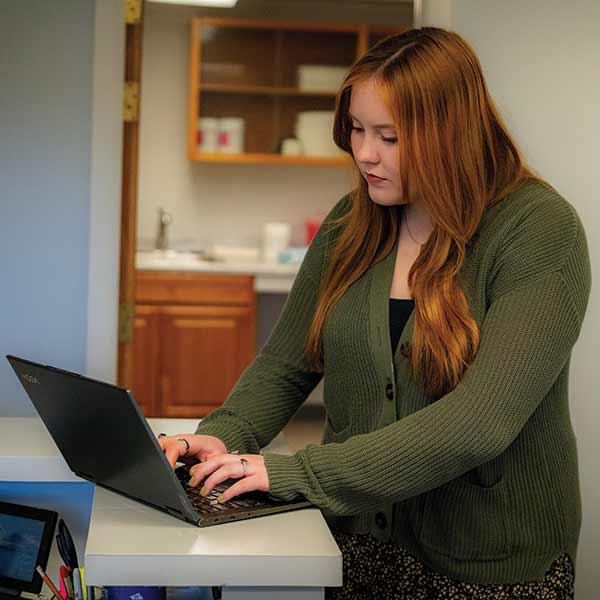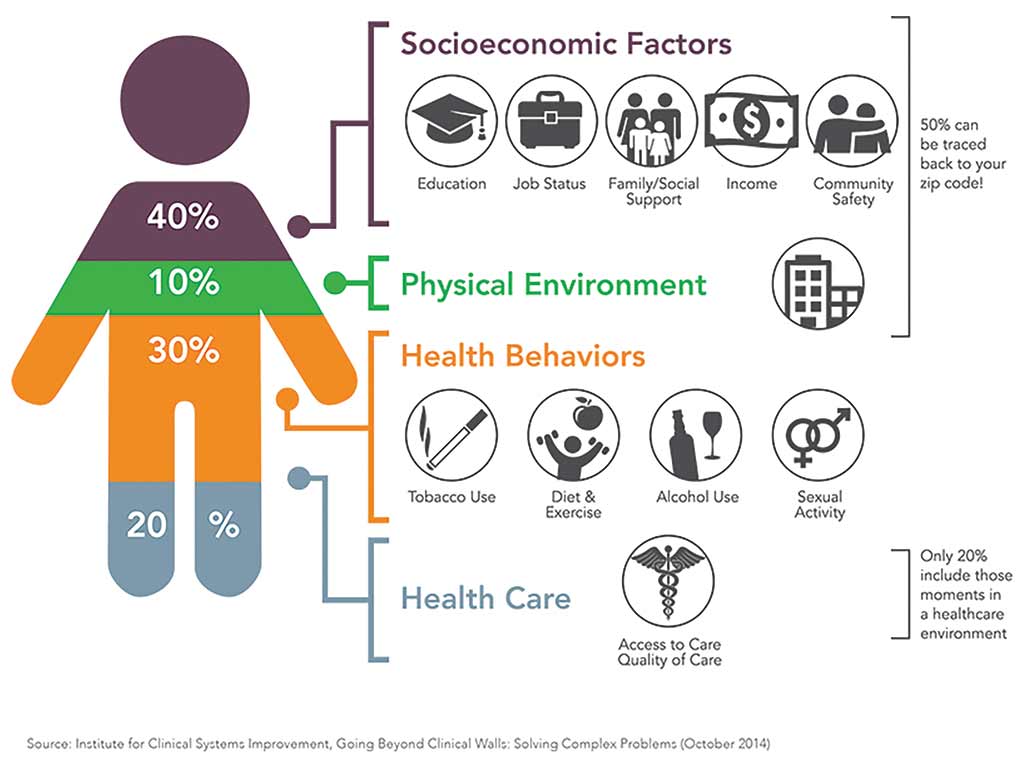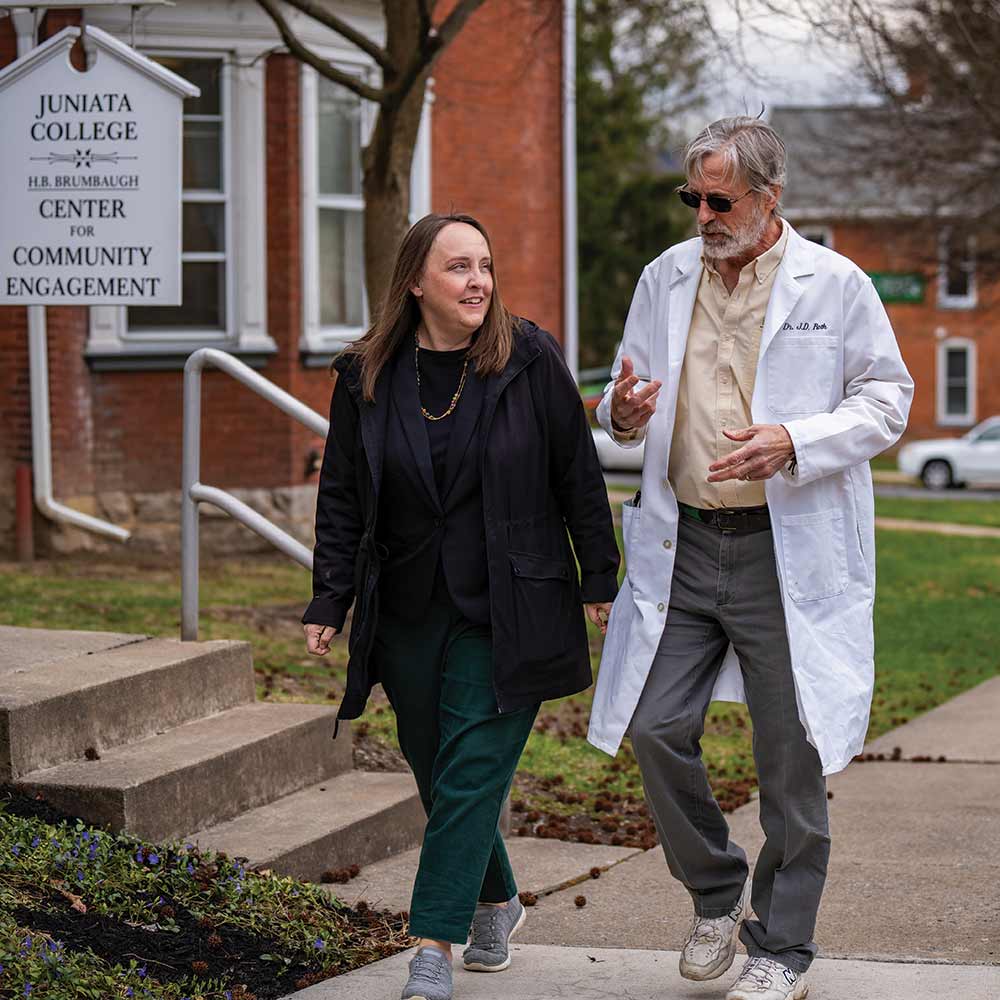Broad Top Area Medical Center CEO John Roth remembers when there were 348 independent hospitals across Pennsylvania, each designed to address specific community health needs across the state’s urban and rural landscape.
Yet over the last few decades, he says, 348 has shrunk to about a dozen, with many hospitals replaced by health systems that often aren’t tailored to specific communities. For rural Pennsylvania, the shrinkage has created large swaths of territories where sick people have no nearby doctors’ offices or hospitals, no public transportation to far-away facilities and no Wi-Fi to access virtual care.
It has also deprived rural communities of healthcare professionals who lived, worked and played among the families they treat and learned the histories and stories behind patients’ medical charts.
Broad Top Area Medical Center (BTAMC) and Juniata College have taken a deliberate approach to address Huntingdon County’s overall health and wellbeing. In recent years, the two institutions have forged partnerships to share best practices, implement innovations to examine root causes behind some of the region’s most pressing health disparities and provide better, more accessible care and resources.
Broad Top is the area’s only Federally Qualified Health Center (FQHC), institutions that furnish medical care for underserved populations. Broad Top has 12 locations in the Huntingdon area, offering medical, dental, pediatric and walk-up services—all administered with an operating philosophy that patients will not be denied services based on an inability to pay.
As a liberal arts college, Juniata provides a well-rounded, integrated approach to understanding health as more than just the absence of disease by immersing students with both classroom, experiential and community-based learning across many departments and disciplines. It has made community engagement a core part of students’ academic experience, helping them understand lived experiences of their neighbors while exploring such topics as rural poverty and healthcare inequities.
Together, the two institutions are working to ensure that they are equipped to serve Huntingdon County—as separate entities and as partners.
“In areas where community hospitals have retreated there have been the creation of health care deserts,” said Roth. “FQHCs have stepped into these areas, and we have seen tremendous growth. We are for the poor, the elderly, the medically underserved. We focus on the physical, mental and oral health.”
“But if we were to limit what we do to just these lanes, we would leave out a lot of issues that impact patients’ health, social determinants of health,” said Roth, who presented “Leveraging Collaboration to Support Community Engagement & Sustainability,” along with Juniata Director of Community Engaged Teaching and Learning and Professor of Communication Sarah Worley ’00 at the Pennsylvania Association of Community Health Centers annual conference in fall 2023. “That’s where the partnership with Juniata comes in. With the skill set that it has, and with Juniata bringing America’s brightest to our area, I think if we work together with an innovative and creative manner, we may be able to impact some of these social determinants of health.”
That was Worley’s goal when she approached Broad Top about the partnership. She also sought to increase community engagement offerings for students at a school where 95% participate in hands-on learning.
“Typically, people hear, ‘community engagement,’ and they think direct service—dig a hole, paint a fence, cut a tree,” said Worley. “Direct service has a place, but we are really trying to lean more into those mutually beneficial and reciprocal partnerships that are rooted in learning and research and other forms of community engagement.”

Worley also oversees Juniata’s Preventative Health AmeriCorps VISTA positions in partnership with Broad Top and is part of the school’s Internal Community Health Working group—comprising faculty, staff and VISTAs—that meets regularly with Broad Top. The group includes:
Bethany Benson, professor of art, who oversees the current Workforce Development VISTA in partnership with Huntingdon County Business and Industry
Liz Mansberger, assistant professor of biology, who is involved in Juniata’s Area Health Education Centers (AHEC) Ambassador program and its Community Health Worker efforts
Tricia Hunt, director of health professions and point person for AHEC Ambassador program
Lee Ann DeShong-Cook, assistant professor of social work, who works closely with many community partners
Amanda Page, associate professor of English, and program director for Juniata’s National Endowment for the Humanities Rural Experience grant project
Tia Warrick, director of public health and assistant professor of biology
Kathy Westcott, Charles A. Dana Professor of Psychology, who oversaw the previous Mental Health Needs Assessment VISTA project in partnership with Penn Highlands Huntingdon Hospital
“The group meets regularly to collaborate, share information, coordinate and support each other’s work,” says Worley. “The working group also annually facilitates a Social Safety Net Simulation for students that also includes our community partners, like Broad Top, who have valuable expertise and perspective to contribute to the simulation.”
Worley said that the makeup of the group of people across departments and disciplines illustrates why a liberal arts college like Juniata is suited to tackling complex issues like community health.
She added, “Through the social determinant of health framework, which recognizes the conditions in the environments where people are born, live, learn, work, play, worship, and age that affect a variety of health, functioning, and quality-of-life outcomes and risks, all of us have something to contribute to the work the CDC divides into five domains: economic stability, education access and quality, health care access and quality, neighborhood and built environment, and social and community context.”
Juniata VISTAs remain in the area for at least a year after graduation to work as capacity builders in partnership with local organizations. They help strengthen local organizations and community groups by developing programs, securing resources, and fostering collaboration among stakeholders. VISTA members also create projects that expand opportunities for individuals and communities affected by poverty. They help increase access to education, healthcare, job training and other resources.
Autumn Eyer ’23, who is now an AmeriCorps VISTA Preventive Health Coordinator at BTAMC, facilitates a program that provides credentials for clinical medical assistants and creates patient-facing deliverables to bolster BTAMC’s pursuit of gaining the Patient-Centered Medical Home (PCMH) designation. The PCMH model is an approach to delivering high-quality, cost-effective primary care. Using a patient-centered, culturally appropriate, and team-based approach, the PCMH model coordinates patient care across the health system.
Eyer also assists Nikki Meals, BTAMC executive assistant, in implementing a workforce
marketing grant from the Pennsylvania Department of Health. This grant seeks to retain
and attract health care providers in rural Pennsylvania.
“We have a cohort of employees moving through the program and getting their credentials,”
said Eyer. “We are also hoping to retain those qualified individuals in Huntingdon
County, and we have been reaching out to other community partners to extend the opportunity
to rural high school students.”
Page said that Juniata’s work and its partnership with Broad Top has bred more on-campus institutional interest in rural issues and a desire to ensure that students in all disciplines take a humanities-centered approach to understanding the forces shaping rural lives.
“By and large, rural poverty is studied either in sociology departments or from a general poverty studies angle,” said Page.
“What we think that we can do as a liberal arts college is expand that scope to look at the stories we tell about rural people, the way stereotypes or narratives about what it means to be rural shape policy and intersect with more traditional ways of looking at rural places.”
Already the effort has inspired current and former students to be part of the solution.
“As a Juniata student I had my community engagement requirements to graduate, but I didn’t feel nearly as connected [to the surrounding community] as I do now,” said Eyer, who grew up in Reading, about two hours from Huntingdon. “I’m getting to know the culture and the ruralness of the area, which is very different from where I grew up. It makes me feel satisfied to offer opportunities to help this county receive quality medical care that it wouldn’t otherwise receive.”

Secondary experience,
primary focus
By: Joe Burris
Juniata College, a school in rural central Pennsylvania, might not appear to have much in common with Alabama’s Black Belt, a region named such for its dark, rich soil but also known as home to some of the poorest and most racially segregated jurisdictions in the country as well as the site of many pivotal moments in America’s Civil Right’s history, including the Montgomery Bus Boycott.
Yet the Black Belt is the backdrop of a ten-day study away experience offered by Juniata. The Comparative Rural Experience is part of Juniata’s Rural Experience secondary emphasis, which provides students with learning opportunities and coursework with an off-campus study component to give students opportunities to compare rural perspectives. The program is anchored at the University of West Alabama in Sumter County, AL, a jurisdiction bordering East Mississippi. Components of the Comparative Rural Experience include collecting narratives from people’s experiences in both regions and critically examining the factors that contribute to the disparity in poverty rates.
Territa Poole, associate professor of psychology and co-director of Juniata’s NEH Rural Experience grant, says that both Sumter and Huntingdon counties are areas that, like much of rural America, were often left behind during and after the nation’s Industrial Revolution. Rural areas, she says, still struggled years later despite federal policies that were intended to move our country forward, including Franklin Delano Roosevelt’s New Deal and Lyndon Baines Johnson’s Great Society programs. “As a nation, we’ve been able to drive the poverty rate down in general to about 12 percent on average, but we’re stuck,” said Poole. And while 12% may not seem like a big number, it still means that there are at least 40 million people living in poverty in the United States, with nearly a quarter of them being children under 18 years old.
Though Huntingdon County has more than three times the population of Sumter County, the jurisdictions are similar in terms of smoking rates, high school graduation rates, percentage of residents with bachelor’s degrees and commute time. Yet they are also remarkably different. For example, Huntingdon County is more than 90 percent White, while Sumter County is more than 70 percent Black. And the poverty rate of Sumter County is more than twice that of Huntingdon County (31.1% vs. 13.2%).
Additionally, Poole explains, “In places where you find large historically Black communities, it’s also common to observe that poverty is experienced differently and has a markedly devastating effect not seen in other areas. So, while there is certainly poverty in Huntingdon, it looks very different than the poverty found in Sumter County.”
But these differences open up an opportunity for students, through Juniata’s National Endowment for the Humanities grant and the new secondary emphasis, to think and learn about why poverty continues to plague rural communities, for them to consider both contemporary and historical aspects of poverty, and to engage in narrative imagination to envision a world where poverty is alleviated in both Huntingdon and Sumter counties.”
Through its Rural Experience Secondary Emphasis, Juniata students are exploring the socioeconomic and historic factors to compare the real experiences of rural people through oral histories, historical archives, and collaborations with local organizations.
In this way, the methods and approaches of humanities fields can expand student perspectives as they explore topics such as rural poverty, healthcare equity and environmental justice. Amanda Page, associate professor of English and director of the NEH Rural Experience grant, said that the goal of the course is to ensure students analyze stereotypes associated with rural areas and how those stereotypes interfere with how the government and other people throughout the country view rural places.
“When you talk to people and find out why they live where they live and what their lives have been like,” added Page, “it works against the limited perceptions of rural folks.”





